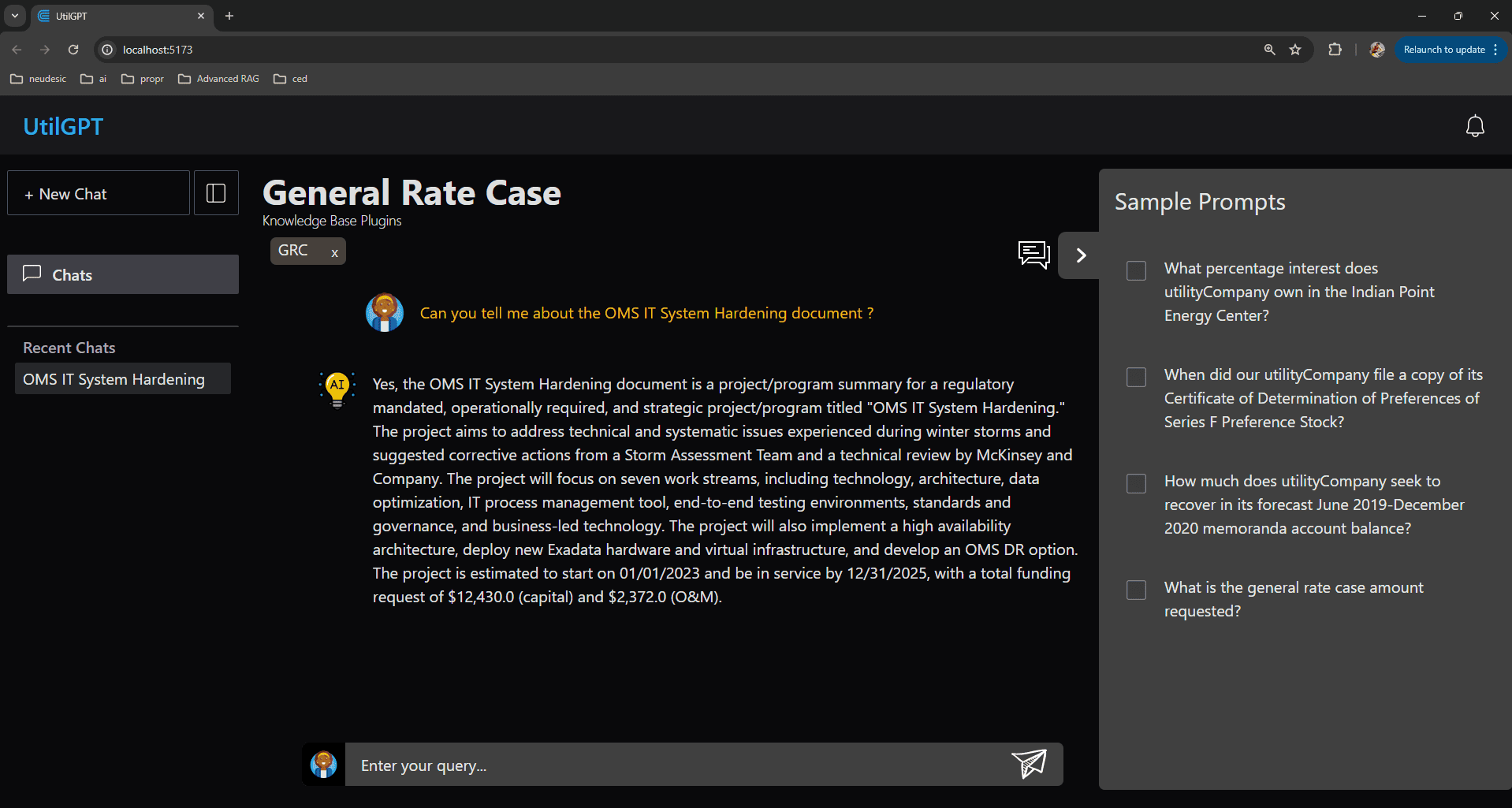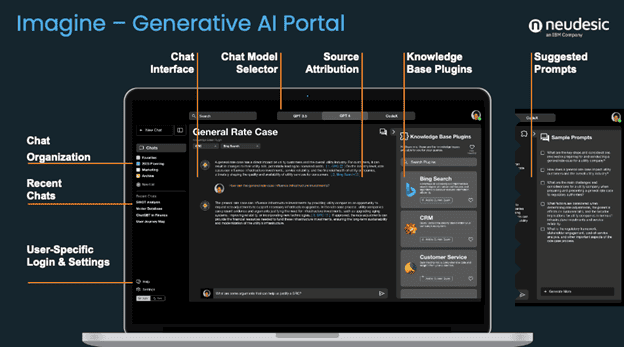
Recent advancements in artificial intelligence (AI), particularly generative AI (GenAI), are disrupting industries globally and creating new opportunities for value creation that previously were impossible.
The utility sector is no exception. Many utilities have already laid the foundation for leveraging GenAI in their operations. While most of these efforts have focused on proverbial “low-hanging fruit” use cases, like chatbots for automated customer service, there is significant potential for the application of GenAI in other areas of the business. One example is the preparation and submission of general rate cases (GRC).
How GenAI Can Help Utilities
GRC preparation is a crucial aspect of utility management and essential to ensuring that providers can maintain and upgrade their infrastructure while providing reliable and affordable services to customers. However, it is often an arduous process that requires planners to collect, aggregate, analyze, and contextualize information and data from a variety of sources and stakeholders before generating supporting documentation for regulators and communities.
Large language models (LLMs) at the heart of GenAI platforms can read, comprehend, and reason against a very large corpus of knowledge and generate coherent text based on a user prompt. The models can interpret and contextualize data and information in much of the same way that a human does, making them very useful for GRC preparation and submission.
Let’s look at the various stages of the GRC process to how and where GenAI can support utilities.
1. Data Collection
Data collection is an important, yet painstaking part of GRC preparation that cuts across the multiple parts of an organization.
As an example, financial planning and analysis (FP&A) teams are often tasked with aggregating and analyzing disparate operational cost data from a variety of sources to justify new infrastructure projects. Understanding where these data points reside, their context to one another, and how best to leverage them for an ideal outcome can be time-consuming for humans. Not so for an LLM, which can ingest, process, and understand this data in seconds. Once trained, the FP&A team can use user-friendly interfaces, like chatbot, to find and query this data using natural language, providing lightning-fast responses to questions related that traditional keyword searches or simple metadata validation cannot achieve.
In our deployments at utilities, we’ve seen FP&A teams not only move more quickly but create more accurate and insightful cost projections. This, of course, ultimately supports better financial planning and decision-making for the utility company’s infrastructure investments.
2. Data Analysis
Accessing data, however, is just the beginning. Opportunities also exist for utilities to leverage AI for data analysis.
Forecasting costs for power supply, operational technology, labor, and other expenses (legal, IT, etc.) is important for GRC preparation. However, volatility and the multitude of factors involved makes predicting future costs and prices extremely difficult.
Machine learning and AI-based tools can aid in this process by connecting disparate data sources and uncovering valuable insights that would otherwise not be possible with traditional analysis tools.
While quantitative analysis falls more in the realm of traditional AI, GenAI can serve as virtual assistants to analysts by enabling them to “talk” with the data.
For example, instead of taking the time to manually import massive GRC documentation which can be upwards of thousands of pages of historical and net new documents of all different file types into a SharePoint repository for analysis, a user could simply prompt the GenAI (using natural language) to do it. The latest GenAI foundational models support even more complex tasks, such as data cleaning and interpretation.
Additionally, it can be applied for low-code programming, which allows users with limited (or even no) software development experience to build highly capable applications. This is particularly advantageous for utilities who are constrained by an IT skills shortage.
Low-code ultimately empowers non-IT employees to apply advanced analytic tools to solve unique and complex challenges, making them far more capable and valuable to the business. For example, a person could use GenAI to develop a time-series forecasting model to assist in the GRC process.
3. Creating the Cost of Service Study (COSS)
Pulling all relevant information together to produce high-quality rate case reports for regulators is a high-stakes, cross-functional effort that requires significant coordination and multiple review cycles to ensure clarity and consistency. Contributors from across the company are typically asked to provide feedback and assist in the production of the report. As many of these individuals are already saturated with tasks for their normal job, workforce capacity can become a bottleneck.
Content planning: A successful GRC should proactively speak to the pressing issues and concerns relevant to regulators and community members. By establishing personas and using various data (e.g., sentiment, prior comments, recent news, etc.), GenAI tools can pre-emptively identify and strategize around the hot topic your constituents care about most. This valuable information can then be used to guide and prioritize your team’s investment, allowing them to address issues before they become problems in the initial submission.
Content creation: GenAI tools can even be used to produce entire rough drafts of the COSS, as well as supporting white papers/reports and testimonies, which must be submitted as part of the rate case. By feeding LLMs guiding regulatory documents and previous successful submissions, GenAI can not only generate the bulk of the text, but do so in-line with regulatory requirements and expectations. This can free up more time for stakeholders to apply their domain expertise and refine the output with the goal of improving the quality of the document, which correlates with receiving approvals and funding for infrastructure projects.
Content review and refinement: The contribution of multiple stakeholders from across the organization also makes it challenging to ensure that there is no overlap, duplication or contradictions between the different analyses and input provided. In many cases, a single person may be tasked with reviewing tens of thousands of pages to check for consistency and alignment. Even then, there is a still a risk of conflicts not being uncovered, as the reviewer likely resides in a legal capacity, with limited expertise in grid engineering or FP&A.
4. Stakeholder Engagement
Stakeholder communication is crucial to the success of a GRC submission. However it can be a challenge, as already strapped teams do not always have the bandwidth to respond to questions in a timely manner or produce content that adequately addresses individual stakeholder concerns. GenAI can help streamline communication in multiple ways.
Supporting the comment periods: Another way GenAI can be used is to answer questions from interveners during the formal input (i.e., comment) period. An LLM could automatically process any requests for information (RFIs). It could then scan all available documents and draft responses for an individual on the GRC team to review. Doing so would help to ensure that no RFIs are missed and save the preparation team time that is often spent manually searching for information or data within the massive repository of documentation.
Strategic communications: Last, but not least, GenAI can serve as a useful tool for corporate comms or public relations teams by performing thematic analysis on all stakeholder feedback. The system could interpret this information and provide strategic recommendations for public-facing statements. It could even be programmed to proactively reach out to stakeholder groups with relevant content, such as articles, blogs, newsletters, etc.
Conclusion: Taking the First Step
Even though an increasing number of utility providers recognize the potential value of GenAI within their business, knowing where to start appears to be the primary challenge. According to a recent poll from Neudesic, 80% of respondents don’t currently have a GenAI strategy in place.
The journey of integrating AI within a utility can be a complex undertaking. Hurdles, like integration with legacy systems, regulatory uncertainty, and limited in-house AI expertise, risk derailing projects or limiting their lifetime value.
Using proven technologists with experience in utilities can help offset these risks and even foster adoption. Having successfully implemented AI into some of the largest utilities in the United States, Neudesic understands the unique challenges presented by GRC workflows and is ready to help you harness its potential.
Reach out to us today to start transforming your operations and enjoy the compounding benefits that time provides.
Related Posts

